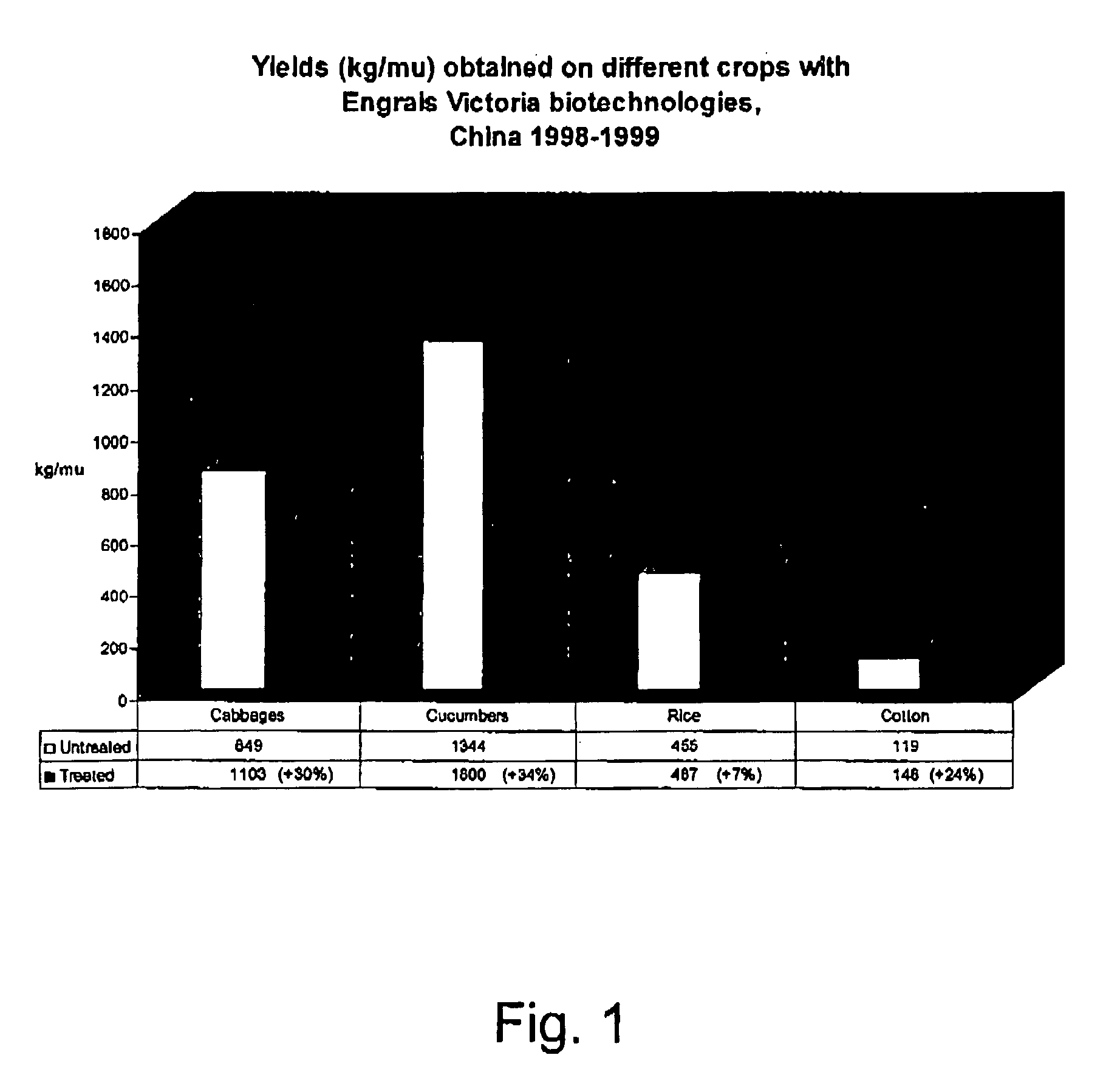Fertilizer and method for producing same
a fertilizer and fertilizer technology, applied in the field of new fertilizers, can solve the problems of large toxic concentration of bacteria, deleterious effect, and bacteria are therefore not at their most active, and achieve the effects of preventing the dispersal of bacteria, reducing costs, and reducing the number of bacteria
- Summary
- Abstract
- Description
- Claims
- Application Information
AI Technical Summary
Benefits of technology
Problems solved by technology
Method used
Image
Examples
example i
Bacillus subtills—Coated Fertilizer
[0054]Bacillus subtilis has been fermented in a fermentor until a count of 108 cells / ml was obtained, under standard culture conditions for the strain. The strain was grown on a base of reconstituted milk (12%) enriched with 5% sucrose The fermentation was allowed to proceed until the desired concentration was obtained as determined by standard agar plate count. Once at the desired concentration, the ferment was cooled down to 5° C. in ice-cold water. The ferment was used at a ratio of 2 liters of ferment to be sprayed on one ton of granular fertilizer. The granular fertilizer was chosen for its nitrogen (N), phosphate (P) and potassium (K) content adapted to the time of use and to the type of culture for which it is intended to be used. For cabbages, the granular fertilizer had an N—P—K formulation of 17-7-12. For cucumber, the granular fertilizer had an N—P—K formulation of 18-7-12. For rice, the granular fertilizer had an N—P—K formulation of 1...
example ii
Effect of the Fertilizer on Various Crops
[0055] Assays were conducted in China on cabbages, cucumbers, rice and cotton. Assays were conducted in parallel in control crop fields and in treated crop fields. In fields of cotton, 50 kg / mu of either the fertilizer alone or the fertilizer containing B. subtilis adhered thereto (as detailed in example 1, referred herein as the fertilizer of the present invention) was used. Mu is a Chinese unit of surface equal to about ⅙ of acre. For the cucumber crops, either 20 kg / mu of fertilizer alone or 13 kg / mu of the fertilizer of the present invention was used. For cucumber, 20% of the above mentioned amount of either fertilizers were used at the beginning, 10% of it was used between the appearance of the 3rd to 5th leaf, 15% was used between the appearance of the 5th to 8th leaf, 15% was used at blossoming, 20% was used upon fruit production, and finally twice 15% was used thereafter.
[0056] For the rice crop, 30% of the above-mentioned amount of...
PUM
| Property | Measurement | Unit |
|---|---|---|
| temperature | aaaaa | aaaaa |
| concentration | aaaaa | aaaaa |
| time | aaaaa | aaaaa |
Abstract
Description
Claims
Application Information
 Login to View More
Login to View More - R&D
- Intellectual Property
- Life Sciences
- Materials
- Tech Scout
- Unparalleled Data Quality
- Higher Quality Content
- 60% Fewer Hallucinations
Browse by: Latest US Patents, China's latest patents, Technical Efficacy Thesaurus, Application Domain, Technology Topic, Popular Technical Reports.
© 2025 PatSnap. All rights reserved.Legal|Privacy policy|Modern Slavery Act Transparency Statement|Sitemap|About US| Contact US: help@patsnap.com

